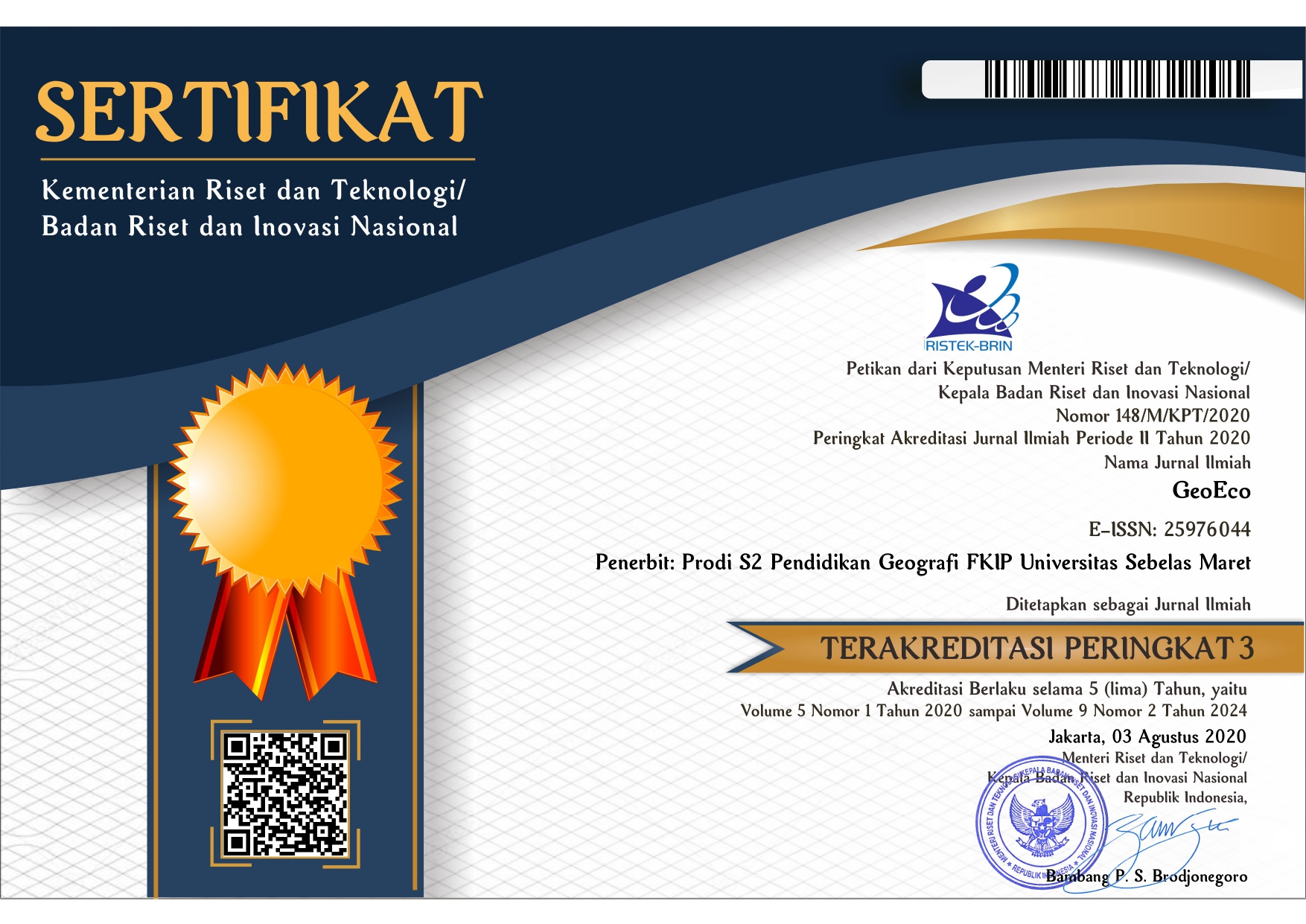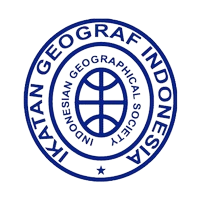THE UTILIZATION OF REMOTE SENSING AND GEOGRAPHIC INFORMATION SYSTEMS FOR MONITORING DAMAGE OF THE MANDOR NATURAL RESERVES IN WEST KALIMANTAN PROVINCE
Abstract
This study aims to determine the level of damage to the protected area of the Mandor Nature Reserve in 2019 by utilizing Remote Sensing and Geographical Information Systems. The method used in this research is secondary data analysis. The data used are the boundaries, area, condition of the Nature Reserve area, and landscape imagery 8. The data collection technique uses secondary data interpretation, while the tools used are Landsat Image 8. The data analysis technique uses the Geographic Information System with ArcGis 10.2.2 software. The results of interpretation of Landsat 8 images recorded on July 5, 2019, and analysis using Arcgis 10.2.2, it is known that from the total forest area of 3.080 ha, the condition of the Nature Reserve is 2,052, 327 ha are still in good condition or have not been damaged, 234,443 ha are lightly damaged, 66,421 ha moderately damaged and 726,809 Ha heavily damaged. Most of the damage to protected areas in the form of Nature Reserve forests was caused by illegal mining activities, namely unauthorized gold mining, forest fires, and forest encroachment or cultivation.
Keywords
Full Text:
PDFReferences
Adirahmanta. (2020). Kerusakan-cagar-alam-mandor-kian-meluas-dulu-hutan-kini-gurun. Retrieved September 28, 2020, from https://pontianakpost.co.id Andrade, G. S. M., & Rhodes, J. R. (2012). Protected areas and local communities: an inevitable partnership toward successful conservation strategies? Ecology and Society, 17(4). Fancy, S. G., Gross, J. E., & Carter, S. L. (2009). Monitoring the condition of natural resources in US national parks. Environmental Monitoring and Assessment, 151(1), 161–174. Gross, J. E., Goetz, S. J., & Cihlar, J. (2009). Application of remote sensing to parks and protected area monitoring: Introduction to the special issue. Remote Sensing of Environment, 113(7), 1343–1345. Mashizi, A. K., & Sharafatmandrad, M. (2020). Assessing ecological success and social acceptance of protected areas in semiarid ecosystems: a socio-ecological case study of Khabr National Park, Iran. Journal for Nature Conservation, 125898. Mitsui, S., Kubo, T., & Shoji, Y. (2020). Understanding residents’ perceptions of nature and local economic activities using an open-ended question before protected area designation in Amami Islands, Japan. Journal for Nature Conservation, 125857. Munir, A., Atmosoemarto, M., & Arifien, Y. (2019). Perubahan Tutupan Lahan Hutan di Cagar Alam Rawa Danau Mengunakan Citra Lansat dan Ssistem Informasi Geografis. Jurnal Nusa Sylva, 17(1), 19–28. Nahib, I., & Wijaya, J. (1999). Aplikasi Inderaja dan SIG untuk Monitoring Keberhasilan Reboisasi di Kabupaten Kupang Propinsi Nusa Tenggara Timur. Jurnal Manajemen Hutan Tropika, 5(2). Nordiansyah, H. (2016). Penilaian Efektivitas Pengelolaan Kawasan Konservasi di Kawasan Cagar Alam Padang Luway Kabupaten Kutai Barat. Agrifor, 15(1), 43–54. Oldekop, J. A., Holmes, G., Harris, W. E., & Evans, K. L. (2016). A global assessment of the social and conservation outcomes of protected areas. Conservation Biology, 30(1), 133–141. Rahayu, S. (2017). Pemanfaatan Penginderaan Jauh Untuk Pengelolaan Bentang Lahan Karst. ResearchGate. Ratnawati, E. (2020). cagar-alam-mandor-kawasan-suaka-alam-itu-rusak-akibat-peti. Retrieved September 28, 2020, from https://www.mongabay.co.id/2015/06/25/c Soliku, O., & Schraml, U. (2018). Making sense of protected area conflicts and management approaches: A review of causes, contexts and conflict management strategies. Biological Conservation, 222, 136–145. Tesfaye, Y., Bekele, M., Kebede, H., Tefera, F., & Kassa, H. (2015). Enhancing the Role of Forestry in Building Climate Resilient Green Economy in Ethiopia: Strategy for Scaling up Effective forest Management Practices in Oromia National Regional State with Emphasis on Participatory forest Management. Verdoodt, A., Mureithi, S. M., & Van Ranst, E. (2010). Impacts of management and enclosure age on recovery of the herbaceous rangeland vegetation in semi-arid Kenya. Journal of Arid Environments, 74(9), 1066–1073. Wang, Y., Lu, Z., Sheng, Y., & Zhou, Y. (2020). Remote Sensing Applications in Monitoring of Protected Areas. Multidisciplinary Digital Publishing Institute. Wang, Y., Mitchell, B. R., Nugranad-Marzilli, J., Bonynge, G., Zhou, Y., & Shriver, G. (2009). Remote sensing of land-cover change and landscape context of the National Parks: A case study of the Northeast Temperate Network. Remote Sensing of Environment, 113(7), 1453–1461.
Refbacks
- There are currently no refbacks.












.png)

